You can spend hours ogling beautiful bullet journal spreads on Pinterest, but committing to doing your own can feel like too big of a task. What if it’s not pretty enough? What if you can’t keep it up? How do you even get started?
Before starting my own journal just over a year ago, I spent a good week reading guides on how to go about it, which layouts I should draw and how I could make my journal work as a diary that I’d actually use. If I’m honest, there’s so much advice that reading it all was pretty overwhelming. What I really needed was a guide to the basics - how do I get started from scratch?
So for you lucky lot, this is exactly that: seven things you need to know if you seriously want to get your bullet journal act together, with tips and advice from bullet journal extraordinaires.
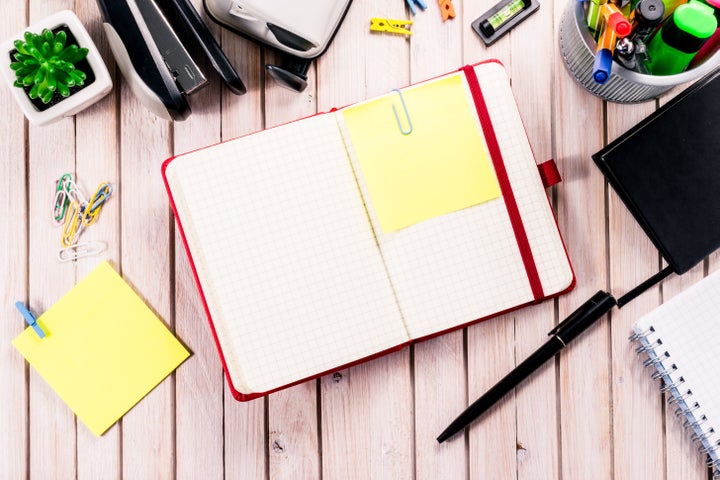
The original bullet journal system is very simple, so check out the video on bulletjournal.com to learn the basics. Before you get started, it’s worth remembering that having a specific time reserved to sit down and BuJo (yes, that’s what we call it) will make the process much more enjoyable. If you’re rushing to finish a weekly spread because it’s already Tuesday and you haven’t started it yet, you’re unlikely to be happy with the finished product.
And one thing all the pro bullet journallers advised me: “Strive for done, not perfect”. “A lot of beginners try to make their bullet journals absolutely perfect,” says Shelby, founder of the beautiful bullet journal blog Little Coffee Fox. “If you overthink every page, every line, every header, you’ll never get anywhere. You’ll freeze yourself with fear and indecision. Even if you make a glaring mistake or the ink smeared - grit your teeth and finish the page anyway.”
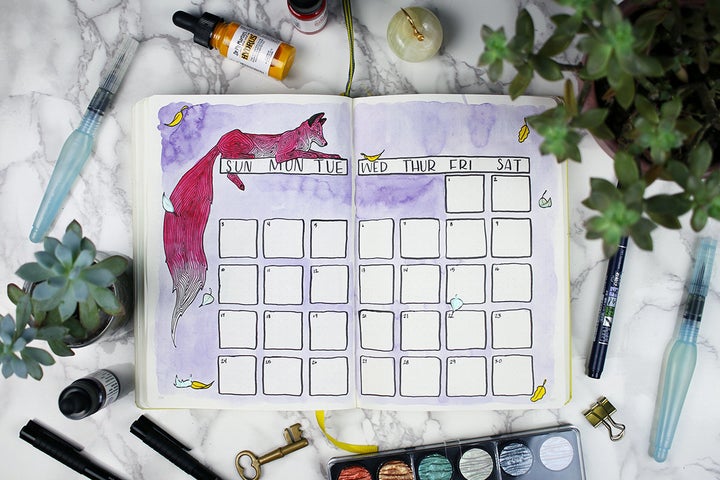
1. The Notebook
The first thing you need to get your started on your bullet journal journey: the notepad. The original bullet journal is a branded Leuchtturm1917 notepad, which you can pick up for £20. But if you’re not fussed about having “bullet journal” embossed on the front, any A5 notepad with grid ruling will do. “My go-to is the Leuchtturm1917 because the quality for the price is unbeatable,” says Shelby. “They come in a huge variety of colours, the pages are pre-numbered, and you can get several types of ruling on the pages.”
No matter which brand you grab, make sure the pages are either dot grid or square grid, as it “opens up all kinds of options for creativity.” Megan Rutell, who runs stationery blog Page Flutter, suggests other notebook brands including Rhodia, Clairefontaine and Field Notes.
2. The Lettering
One of the most beautiful parts of bullet journal spreads is the lettering - those wonderful titles and headings that really make a page stand out. While few of us may have the time, money and motivation to enrol on a calligraphy course, we can still work to improve our lettering game. And all you need to do is practise. Practise, practise, practise.
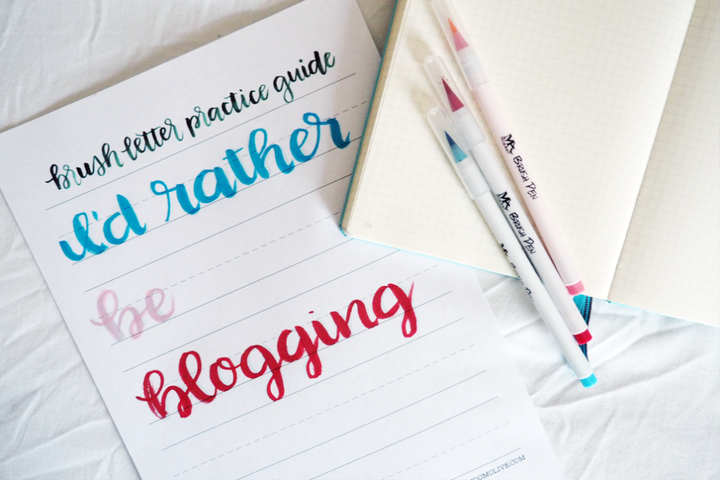
Shelby’s beautiful lettering is something she’s built up over years. She started fiddling around with lettering on a whim, “Even though I was terrible for the longest time, I kept on practising and working on it. I’m so happy I stuck with it because it’s an incredibly rewarding and useful hobby,” she says. “I took forever to learn because there just aren’t a lot of great resources online to get a foothold.” (Shelby has since made her own: you can now take her online course for beginners Brush Lettering 101.)
Everyone will go through the ugly duckling stage with lettering, so don’t give up at the first hurdle! Remember: YouTube is a gem in this instance.
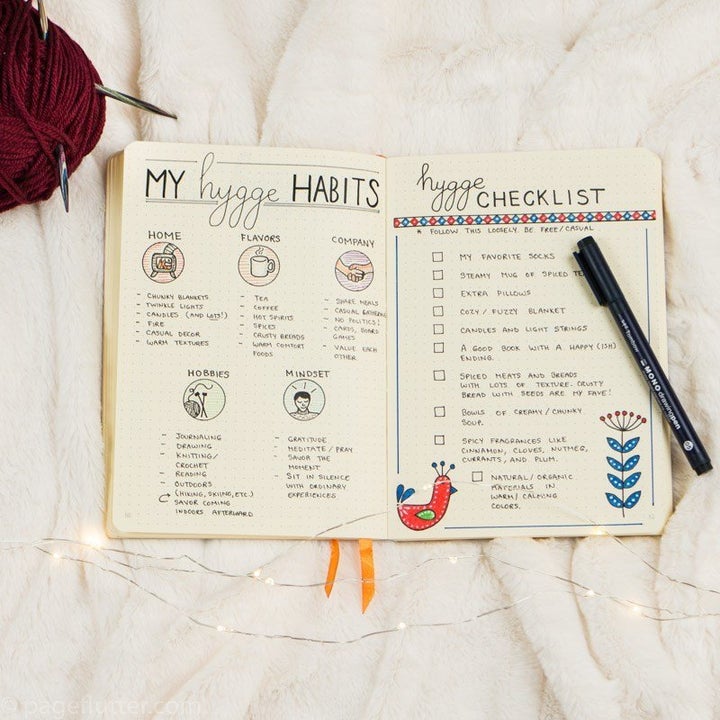
Rutell says focusing on your handwriting is a good place to start. “I examine my own handwriting and compare it to samples I admire,” she says. “Simply adding a bit more care to your handwriting can make it look entirely different.”
Whenever you’re stuck, turn to the internet for inspo. Browse Pinterest for fonts you might like to try and replicate, suggests Megan Trigg, who blogs about BuJo’ing on her blog Lazy Thoughts.
3. The Layouts
A bullet journal is basically a drawn-out diary, so there are two main layouts almost everyone will use: a monthly spread giving you an overview calendar-style page of the month (usually with doodles and colours themed to the season) and a weekly spread where you draw out your week - usually on two pages - to fill in like a diary.
Once you’ve got your basic layout, it’s time to start decorating.
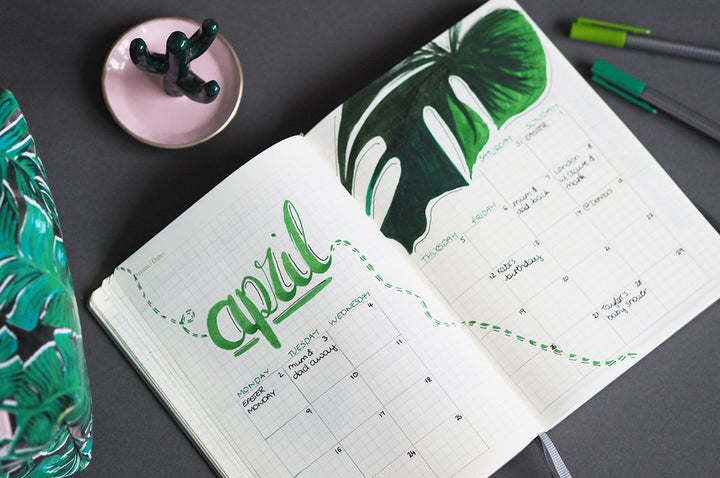
Don’t be afraid to experiment with different layouts with your monthlies and weeklies. “When you first get started, you might want to stay safe and do the same layout over and over, but get a little bold,” says Shelby. “I used horizontal layouts for the longest time, but when I finally stepped out of my comfort zone to begrudgingly try verticals, it was fantastic!”
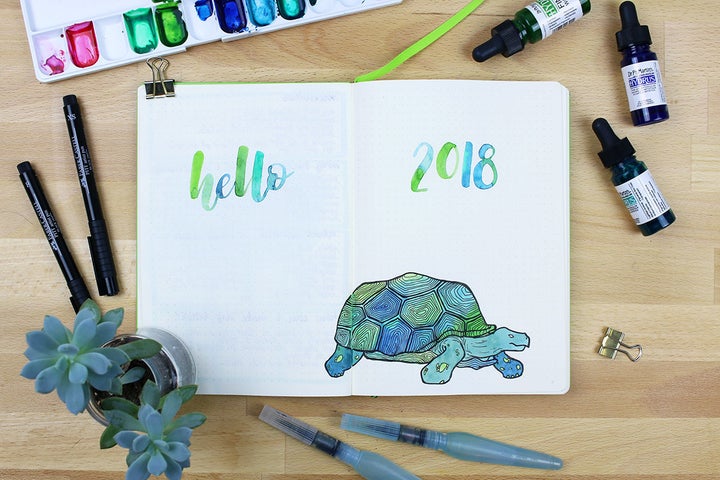
Rutell adds that the layout has got to be functional for you. Don’t give yourself a tiny box to write out all the things you have to do that week just because it fits well with your design. “Many people get lured into fancy layouts simple because they look pretty, but you should also consider function,” she says. “If it’s not working, ditch it and try something new.”
4. The Pens
Any stationery addict will know that you can’t just use any pen when you’re writing in your journal, you have to use your favourite pen. Mine is the MUJI fine liner - perfect for when I’m free-flowing journalling.
Megan from Page Flutter recommends a good better-than basic kit: 1) some fine liner pens, helpful for delicate doodles and basic layout lines; 2) brush pens, which offer the option to have fine lines and broad lines and are great for titles; and 3) coloured felt-tipped pens, which are great for colouring and decorating.
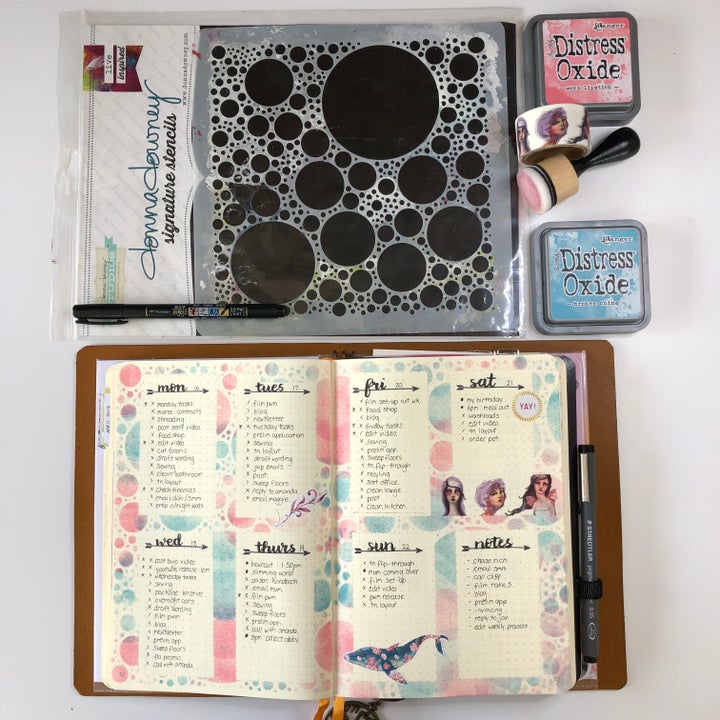
Trigg’s favourite pen is the Uniball 0.5mm Vision Rollerball, “It doesn’t bleed, doesn’t show through that much and lasts forever,” she says. “For colour, I love Staedtler fineliners.”
You also might get a different pen for your headings, “I love to use a Tombow Fudenosuke brush pen with a soft nib for fancy headers,” says Helen from Journal With Purpose. “I find it easier to control than the Tombow ABT pens and they are great for beginners at brush lettering.”
5. The Trackers
Trackers are a great to monitor habits and are why many bullet journallers credit their hobby with helping improving their mental wellbeing. The designs can be diverse and artistic, but the basics are simple: an option to colour in/tick off a box each day to show you have/haven’t completed a habit. Some examples go overboard, but I try to keep mine realistic: to achieve 10,000 steps a day, drink the recommended amount of water and do one thing that makes me smile.
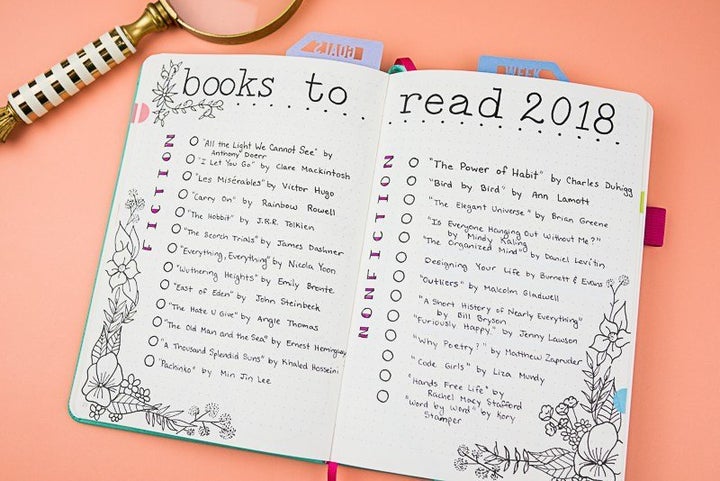
Try not to let your trackers become a chore. “I try to limit the number of trackers I use so they don’t become overwhelming, ” says Rutell. “Each year, I create a few fun ones to indulge my imagination like books to read, or places I want to travel. Dream lists, really. I also use a recurring task tracker (updated monthly) to guide planning routine and keep up with major reminders like the dog’s medication, bills and business tasks.”
Rutell says one of the most useful pages is called ‘When Did I Last…?’ where she tracks everything from oil changes on her car to the last time her kids went to the dentist. It’s all in one place, so she doesn’t have to flip between dozens of different trackers.
6. The Inspiration
I never start a new bullet journal spread without looking for inspiration on colours, design and layout online first. Drawing doesn’t come naturally to me, so I often copy other things I see on Pinterest or Instagram. Don’t worry if that works best for you, too. If you’re stuck with where to start, put “bullet journal ideas” followed by the month into Pinterest - you’ll find a range of different themes and doodles relevant to that season (I had a ball at Christmas time).
Another way to find inspiration for your page is to search “bullet journal doodles” which often give you step-by-step instructions on how to draw simple objects that will be nice additions to your page, like these beautiful flowers below.
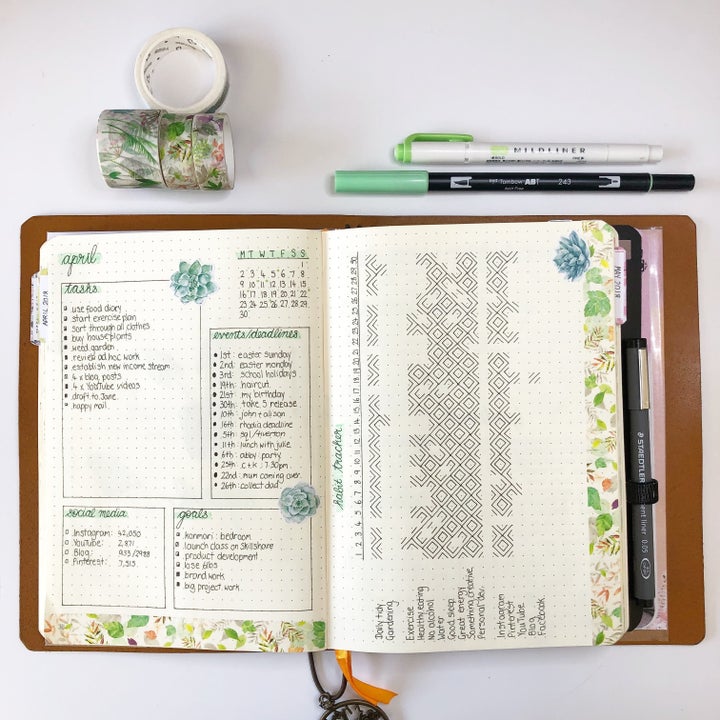
“Life experiences usually trigger new pages in my journal, but I also turn outward when I’m stuck,” says Rutell. “The journaling community is innovative and they love to experiment. The way they can create a spread for any situation is amazing. Everyone swaps ideas on Facebook and Instagram and helps each other when they’re stuck.”
7. The Accessories
You’ve got the notebook, you’ve got the pens and you’re ready to go. If you’re looking to up your game, there are plenty of accessories you can get that will make your BuJo even brighter.
:: Washi tape: coloured paper tape that you can stick on your pages to separate sections, create borders or make boxes stand out.
:: Fancy paperclips: have additional notes you want to keep safe with your weekly spread? Clip them in using interestingly shaped or coloured paperclips.
:: Ruler: you need one. End of.
:: Helix and circle maker: “People are probably so tired of my gushing reviews of this,” says Megan. “I can’t stop talking about it. It’s like a cross between a protractor and a compass, and it’s the best tool I’ve found for making circles in my journal.”
:: Water colour pencils: “This is one of my favourite stationery supplies as you can create a lovely watercolour effect without having to add too much water to your page,” says Helen.
Do you have a bullet journal? Have you created wonderful spreads? Has journalling improved your wellbeing? I’d love to hear your stories and experiences. Drop me an email on amy.packham@huffpost.com.